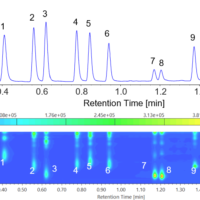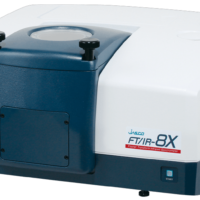Introduction
Aflatoxins are a group of mycotoxins produced by microorganisms such as Aspergillus flavus, Aspergillus parasiticus and Aspergillus nomius living in tropical or subtropical regions and have a strong carcinogenic affect. It has been reported that higher levels of aflatoxins are often found which exceed the safe levels laid down by food safety agencies such as the FDA in wide variety of food products including fruits, pulses, grains and spices.
Present regulations require that total aflatoxins (sum of aflatoxin B1, B2, G1 and G2) must be lower than 10 μg/kg. A precolumn derivatization method that uses trifluoroacetic acid (TFA) in combination with HPLC with fluorescence detection offers greatly improved sensitivity for aflatoxins B1 and G1.
While the previous article explains the aflatoxin analysis by HPLC and UHPLC, this article shows the aflatoxin analysis of roasted peanuts.
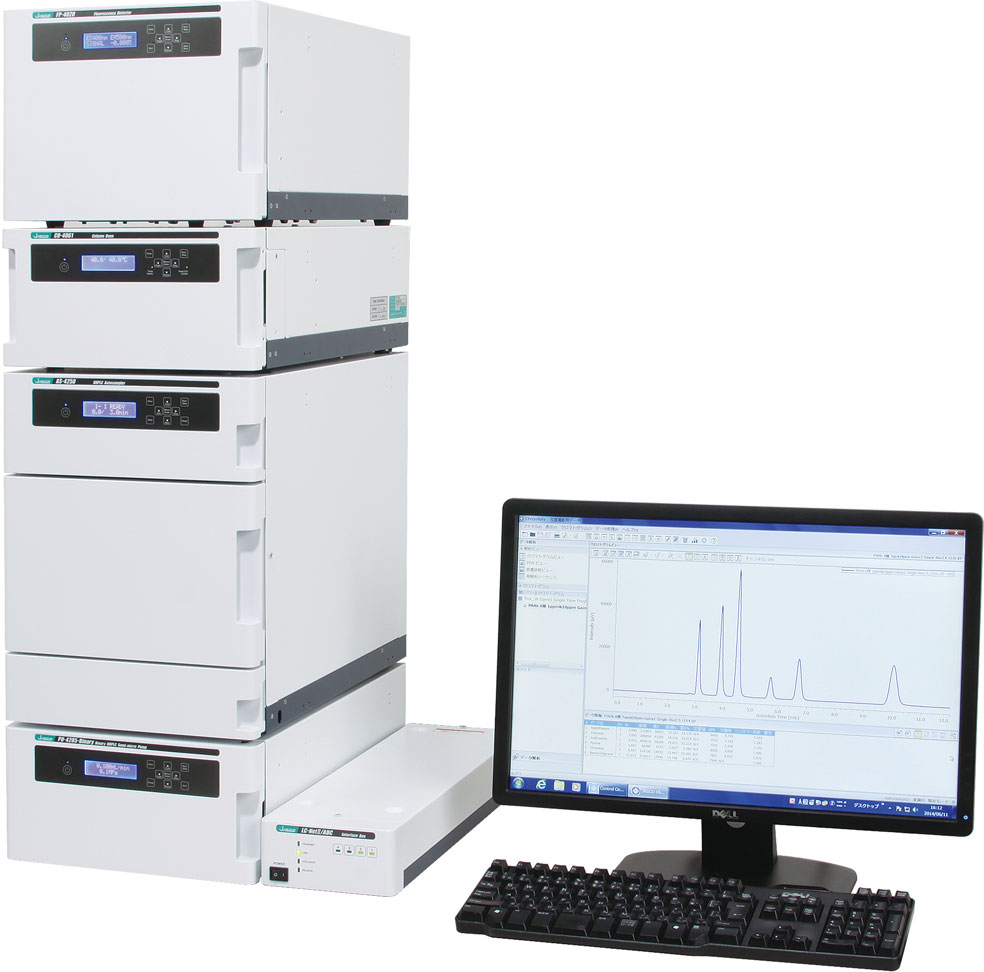
LC-4000 UHPLC system
Experimental
Sample preparation
Roasted peanuts were selected as actual sample, and the immunoaffinity column was applied to the preparation of roasted peanuts. Sample preparation procedure is shown in Figure 1. Regarding the chromatographic conditions and details of derivatization, please refer to the previous article.

Figure 1. Sample preparation (roasted peanuts)
Results
Chromatograms of the roasted peanuts sample prepared using the immunoaffinity column (AFLAKING) in sample preparation are shown in Figure 2 and 3 (both the conventional HPLC and UHPLC).
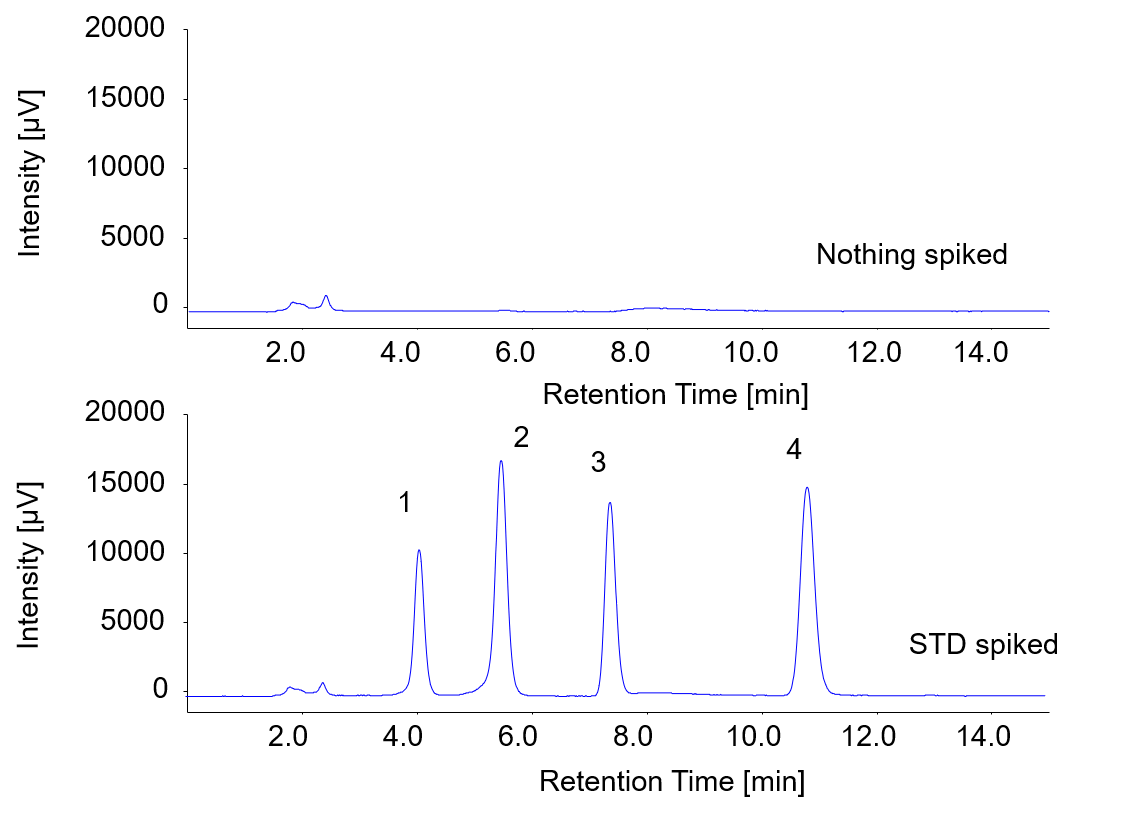
Figure 2. HPLC Chromatograms of purified solution from roasted peanuts (1=Aflatoxin G1, 2=Aflatoxin B1, 3=Aflatoxin G2, 4=Aflatoxin B2)
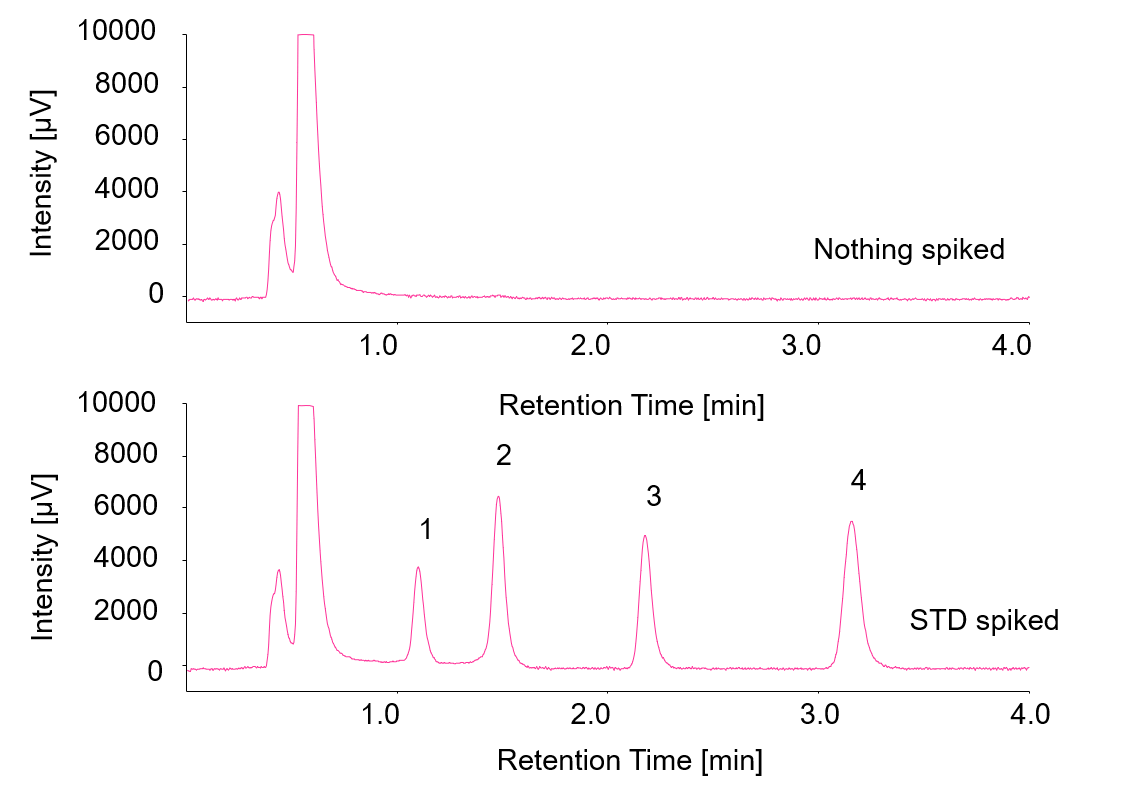
Figure 3. UHPLC Chromatograms of purified solution from roasted peanuts (1=Aflatoxin G1, 2=Aflatoxin B1, 3=Aflatoxin G2, 4=Aflatoxin B2)
The samples from roasted peanuts and those spiked with the standard mixture of aflatoxins were used for the recovery estimation of aflatoxins. Almost no contaminant peaks are observed in the chromatograms and good recovery of standard aflatoxin was obtained for both conventional HPLC and UHPLC as shown in Table 1.
Table 1. Recovery [%] of standard aflatoxins
| Conventional HPLC | UHPLC | |
| Aflatoxin G1 | 101 | 99 |
| Aflatoxin B1 | 99 | 98 |
| Aflatoxin G2 | 102 | 104 |
| Aflatoxin B2 | 101 | 102 |

